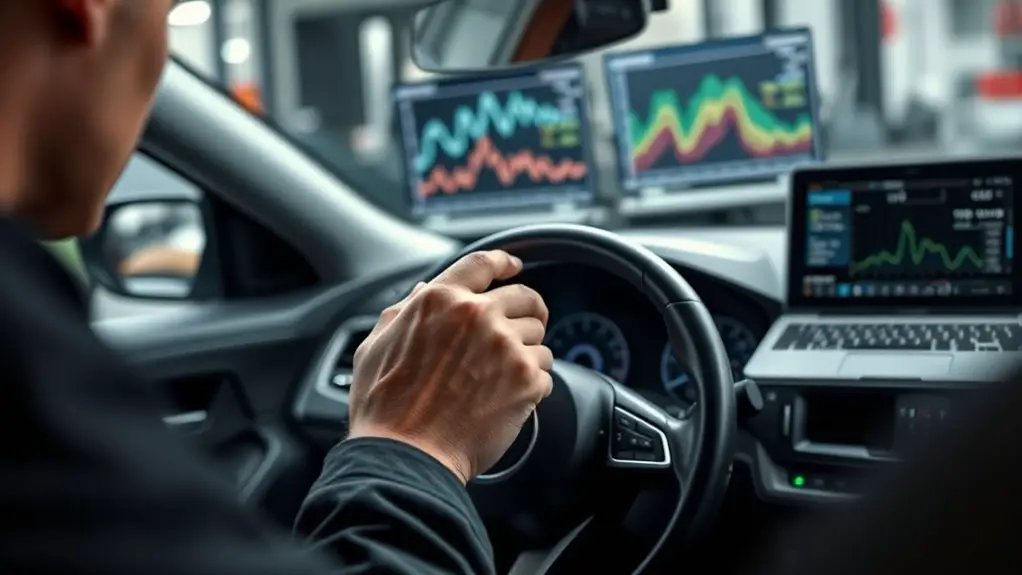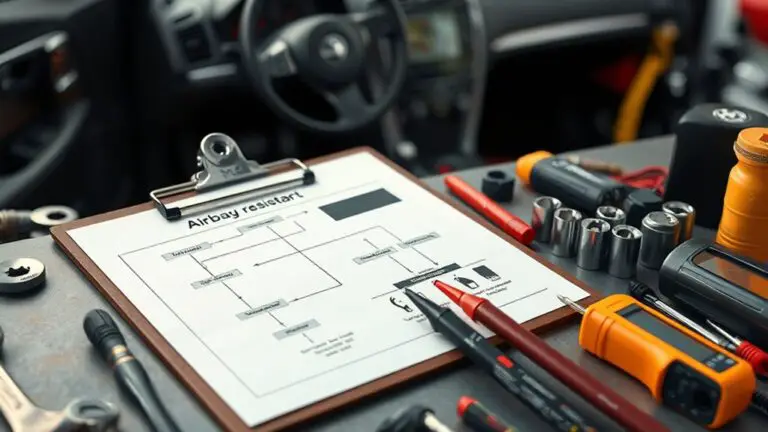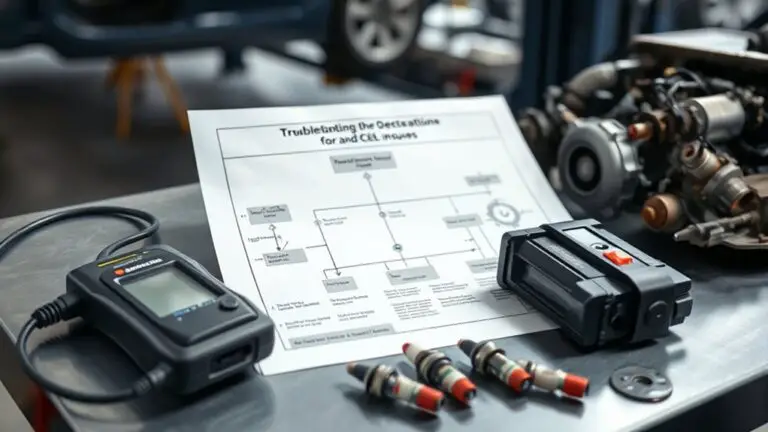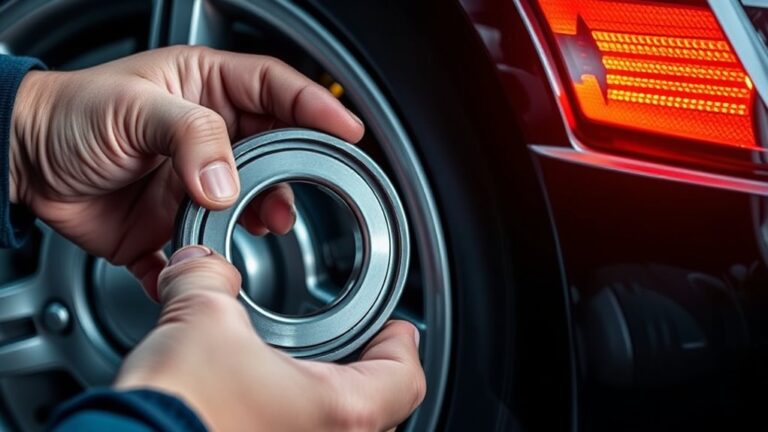How to Diagnose Steering Angle Sensor Error in a Family Sedan Safety System
Diagnosing a steering angle sensor (SAS) issue starts with a sensor-first approach. Begin with a visual check of the steering column, wheel centering, and any abnormal play or noise. Then verify tire pressures and wear, perform a controlled test drive to observe steering response, and confirm that EPS and stability systems respond consistently with wheel input. Review onboard DTCs for SAS or related faults, noting freeze-frame data. If inconsistencies persist, you’ll learn more about targeted calibration and professional diagnostics ahead.
Understanding the Role of the Steering Angle Sensor in Safety Systems
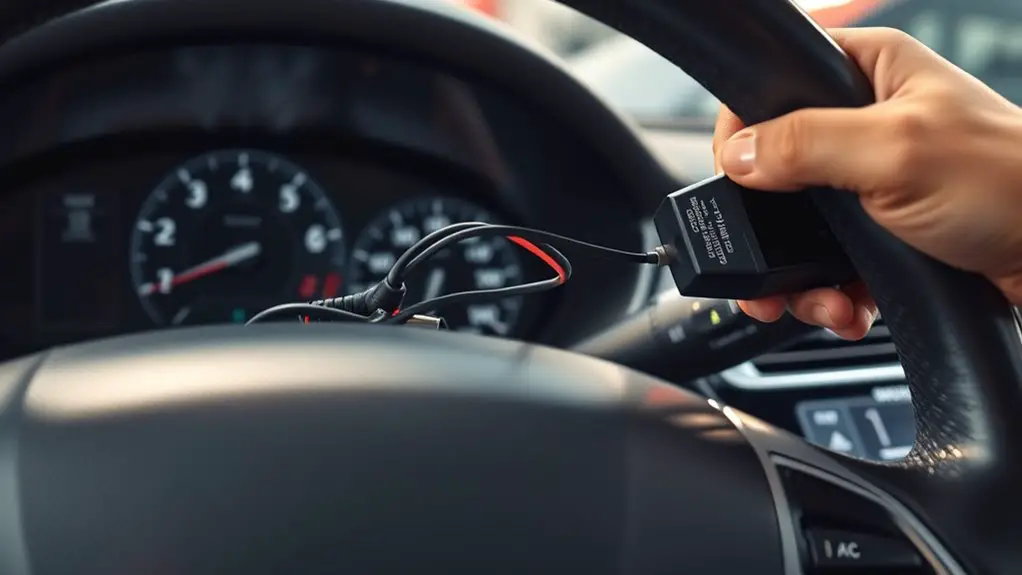
The steering angle sensor (SAS) is a critical input for dynamics and safety systems, providing real-time data on wheel angle and rate of turn. You rely on it to translate driver intention into coordinated motion, with measurements that feed stability control, lane-keeping, and adaptive cruise elements. Understanding sensor functionality means tracing how measured angle, rate, and offset are processed to delay or correct steering commands, preventing oversteer or understeer scenarios. Calibration, horology of signals, and sampling rates define the fidelity you receive, while redundancy and fault filtering guard against noise and drift. In safety implications, the SAS influences ride stability, collision avoidance, and assistive steering performance, making accurate data essential for predictable behavior. You’ll find that consistent readings support timely interventions and safer responses in dynamic conditions. When the sensor communicates correctly, your vehicle preserves intended trajectory with minimal intrusion, ensuring both freedom of movement and disciplined control.
Common Symptoms That Point to a Steering Angle Sensor Issue

Common symptoms that point to a steering angle sensor issue usually appear as inconsistencies between driver input and vehicle response, intermittent warning lights, or degraded stability control performance. You’ll notice steering feedback that doesn’t align with your wheel position, plus odd yaw or drift at constant speed. Intermittent dash alerts may prompt a check-engine-like message, even when nothing else seems faulty. In some cases, traction control or electronic stability control kicks in abruptly or behaves erratically during cornering. You might also feel heavy or stubborn steering effort in specific directions, suggesting calibration drift.
| Visual cue | Physical cue |
|---|---|
| A mismatch between wheel angle and car direction | Subtle pull or twitch when stabilizers engage |
| Fluctuating dash indicators | Uneven resistance during gradual turns |
These symptoms point to sensor calibration needs and steering feedback inconsistencies, guiding you toward precise diagnostics without overhauling the system.
How Steering Angle Sensor Errors Are Diagnosed in Modern Vehicles
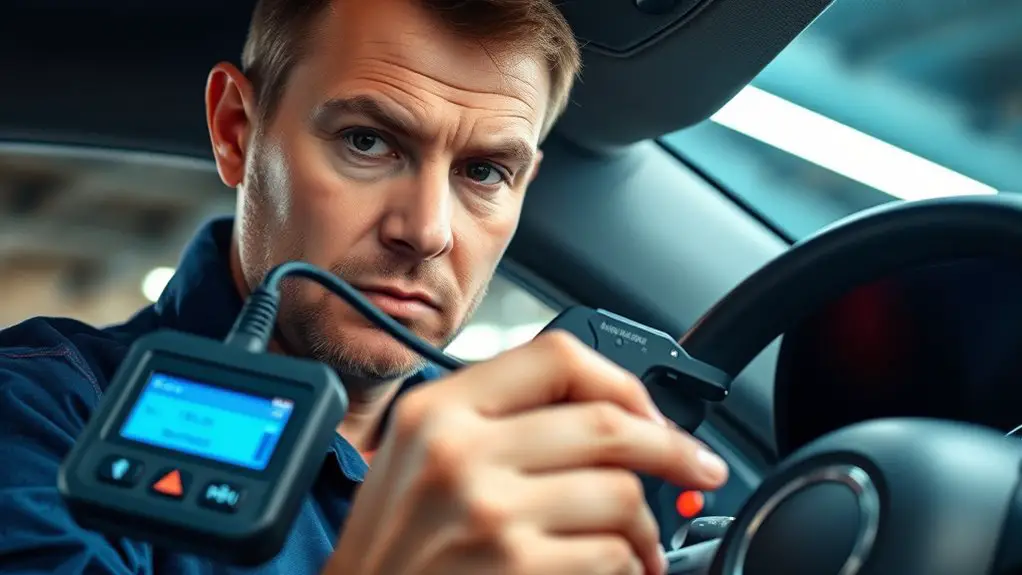
You’ll start by examining Sensor Data Interpretation to understand live steering angle readings, wheel speeds, and chassis motion, ensuring the data aligns with expected vehicle states. Next, you’ll follow Diagnostic Workflow Steps that standardize checks—from sensor self-tests and CAN messages to fault code retrieval and calibration status—to identify where discrepancies originate. This foundation guides you through precise, repeatable procedures for confirming sensor faults and informing subsequent repair actions.
Sensor Data Interpretation
Sensor data interpretation for steering angle sensors hinges on verifying real-time needle-and-arc readings against expected vehicle dynamics. You compare sensor output to known, model-specific curves during steady-state and shifting maneuvers, ensuring alignment within tolerance bands. Precision hinges on synchronized data streams: steering wheel angle, wheel position, yaw rate, and vehicle speed. You perform sensor calibration to establish baseline offsets and scale factors, then apply data validation to catch glitches, spikes, or latency. Cross-check with redundant channels when available, and reject data that violates physical constraints, such as impossible wheel angles at given speeds. You document deviations, differentiate sensor drift from transient events, and confirm recovery through repeatable tests. Ultimately, this disciplined interpretation supports reliable safety-system responses without leaning on assumptions.
Diagnostic Workflow Steps
Diagnostic workflow for steering angle sensor errors follows a disciplined sequence that begins with data collection and baseline establishment. You verify sensor calibration, review vehicle archives, and note driving conditions. Next, you perform error detection using raw yaw-rate, steering wheel angle, and wheel position data, cross-checking with the vehicle’s stability control logs. If signals diverge, you isolate the sensor or wiring fault, then re-run calibration procedures and revalidate with target inputs. Finally, you document findings and implement a corrective action plan, validating by repeated cycles and road testing.
| Step | Action |
|---|---|
| 1 | Collect data and establish baseline |
| 2 | Execute sensor calibration and verify |
Interpreting Error Codes and Diagnostic Trouble Codes Related to the Sensor
When you encounter error codes or diagnostic trouble codes (DTCs) for the steering angle sensor, start with a structured interpretation: confirm the code Family, note any freeze-frame data, and identify the affected subsystem. Next, map the code to its meaning using error code definitions. Distinguish between sensor fault analysis and system-wide faults by checking consistency across related ABS and traction-control codes. Record the current values reported by the sensor, steering angle, and yaw-rate correlations, then compare them against expected ranges. If multiple codes point to the same subsystem, prioritize the most specific message and note any patterns over time. Evaluate calibration status, recent steering events, and software levels that could trigger code changes. Use the data to form a hypothesis about sensor integrity, wiring, or control unit communication. Maintain traceability for diagnostics, ensuring your conclusions remain grounded in observable evidence rather than assumptions.
Safe, At-Home Checks You Can Perform Before a Repair
If you’re preparing to repair a steering angle sensor issue, start with safe, at-home checks that don’t require special tools. Begin with a visual inspection of the steering column and wheel assembly for obvious damage, play, or binding. Confirm the steering wheel is centered and that the wheel shows minimal offset when driving straight. Record any irregularities in steering response, unusual noise, or resistance. Conduct sensor calibration techniques only as far as basic user-accessible steps permit: verify the ignition is off, then reconnect the vehicle’s battery ground briefly to reset minor electronics, if the owner’s manual allows. Check tire pressure and uneven wear, since these affect steering inputs and can skew alignment data. If you notice consistent drift at highway speed, note the direction of deviation. Perform a controlled, slow test drive on a quiet road to observe responsiveness, avoiding aggressive maneuvers. Maintain clear documentation for the repair path, including steering wheel alignment observations.
When to Reset or Recalibrate the Steering Angle Sensor
Resetting or recalibrating the steering angle sensor is appropriate when the vehicle’s steering feels inconsistent, the wheel won’t return to center, or there are warning messages related to stability control or EPS. You should assess whether symptoms are intermittent or persistent, then determine if a reset or full calibration is warranted. A reset can clear transient sensor faults, but it won’t fix degraded hardware. If faults recur, proceed to calibration, using the manufacturer’s calibration methods and tool suite. Calibration methods vary by system: some require steering wheel center alignment, road-wheel alignment, or vehicle cradle immobilization, while others rely on adaptive learning sequences driven by the vehicle’s control module. Be mindful of reset frequency recommendations from the service information; excessive resets can mask growing issues. Document fault codes, sensor ages, and recent repairs to track trends. After any reset or calibration, test slow-speed and steady-state stability to verify self-correcting behavior.
Risks of Driving With an Unresolved Steering Angle Sensor Problem
Driving with an unresolved steering angle sensor problem introduces specific, measurable risks to vehicle stability and safety; unresolved faults can cause intermittent or persistent misalignment signals that degrade EPS and stability control performance. In this scenario, you face degraded corrective capability during cornering, lane changes, and evasive maneuvers. The steering feel may become inconsistent, with delayed or overactive wheel assistance that reduces driver confidence and increases steering torque. Systems that rely on precise angle feedback, including electronic stability control and traction control, can trigger warnings or enter degraded mode, elevating the probability of skids or unintentional lane drift. A formal risk assessment should consider probabilistic failure modes, exposure during high-speed driving, and the potential for cumulative wear on tires. Safety implications include reduced controllability, longer stopping distances, and heightened crash risk under extreme maneuvers or adverse road conditions. Treat unresolved faults as a priority safety concern requiring timely diagnosis and remediation.
Steps for Selecting a Professional Mechanic or Dealership Service
When selecting service, you should first verify that the technician is qualified for steering angle sensor work. Compare dealer versus independent shops, weighing access to OEM tooling and specialized software. Always confirm credentials up front and prioritize proof of certifications before scheduling.
Choosing a Qualified Technician
Choosing a qualified technician is essential for accurately diagnosing and repairing a steering angle sensor issue; start by confirming the service provider has direct experience with steering and stability systems, including trained technicians and up-to-date diagnostic tools. You should verify technician qualifications and assess service experience before any work begins.
- Confirm hands-on experience with steering and stability modules
- Check recent training on sensors, actuators, and yaw-rate systems
- Review certifications and factory diagnostic tool access
- Request a transparent diagnostic plan with timeframes and milestones
This approach keeps the process precise, ensuring you select a shop that delivers reliable, repeatable results. Prioritize clear communication, documented results, and a path to post-repair verification. You deserve confidence in the diagnostic and repair workflow.
Dealer Vs Independent Shop
Dealer service options balance convenience, cost, and expertise: you’ll typically weigh dealership service departments against independent shops to determine who can deliver accurate steering angle sensor diagnostics and reliable repairs. You compare turnaround times, access to OEM tools, and diagnostic depth, then decide which path aligns with your goals for precision and mobility. Below is a concise comparison to guide your choice.
| Factor | Dealer advantages | Independent savings |
|---|---|---|
| Speed | Moderate to fast | Variable, often flexible |
| Tools | OEM-grade, updated | 1st-party equivalents, evolving |
| Cost | Higher upfront | Lower, transparent |
- Dealer advantages emphasize certainty and factory data; independent savings emphasize affordability and value without sacrificing safety.
- Choose based on needed reliability and your budget.
Verify Credentials First
Before you commit to any repair plan, verify credentials first. You’ll shortlist shops by solid credentials and documented track records, then confirm they meet professional qualifications for steering angle sensor work. This safeguards safety and respects your right to transparent service.
- credentials verification: check licenses, registrations, and any state or manufacturer authorizations.
- professional qualifications: review certifications (ASE, OEM-specific) and ongoing training relevant to steering and safety systems.
- verify parts sourcing: ask about OEM parts, warranty coverage, and availability timelines.
- transparency: request written estimates, diagnostic procedures, and an escalation path if issues arise.
A methodical approach reduces risk, guarantees accountability, and supports your freedom to choose a service that aligns with your standards and expectations.
Maintaining Your Steering System to Prevent Future Sensor Faults
Regular maintenance is essential to prevent steering angle sensor faults. You’ll stay ahead by implementing a disciplined routine focused on consistency and measured checks. Start with a clean baseline: inspect the steering column, joints, and rack for play, corrosion, and wear. Record any deviations so you can track sensor longevity over time. Schedule periodic alignment verification after wheel removal or suspension work, and guarantee steering torque is within specification. Use a controlled driving protocol to recheck feedback under known conditions, noting any discrepancies between steering input and sensor reading. Maintain compliant lubrication where specified, and replace worn bushings before they affect calibration. Check electrical connectors for moisture, corrosion, and secure mating, reseating if necessary. Document every maintenance action, including part numbers and dates, to support future diagnostics. This disciplined approach reduces anomalies, supports reliable steering maintenance, and extends sensor longevity, enabling safer, more predictable vehicle behavior.
Frequently Asked Questions
Can Steering Angle Sensor Faults Cause Power Steering Failure?
Approximately 60% of steering issues relate to sensor faults, and yes, steering angle sensor faults can cause power steering failures. You’ll notice reduced assist or erratic steering when the sensor misreads the wheel angle. Focus on steering feedback and sensor calibration: verify proper Wheel Angle versus steering input, and recalibrate if needed. Use precise diagnostics, check for communication faults, and confirm the steering column position aligns with the system’s reference. If inconsistencies persist, service promptly.
Do All Vehicles Require Wheel Alignment After Sensor Replacement?
Yes, not all vehicles require wheel alignment after sensor replacement, but many do. After you replace the steering angle sensor, you should verify wheel alignment and recalibrate the steering angle sensor system as specified by the manufacturer. If the vehicle’s service procedure calls for it, perform a road test and confirm steering feel and error-free fault codes. Document any alignment adjustments, and guarantee wheel alignment remains within published tolerances for ideal sensor performance.
Will Sensor Issues Trigger Permanent Drivability Restrictions?
Yes—you’ll typically regain full drivability once sensor diagnostics confirm a safe, correct steering angle reading and any fault codes are cleared. Permanent restrictions aren’t standard unless a critical system fault triggers stability precautions. Start with sensor diagnostics to verify alignment values and steering sensor consistency, then read error codes to pinpoint issues. A single anachronism at the outset adds flavor. If codes persist, recheck wiring, calibration, and module software before road testing.
Are Aftermarket Sensors Compatible With OEM Safety Systems?
Yes, some aftermarket sensors can be compatible, but you must verify OEM compatibility and vehicle coding. You’ll assess aftermarket compatibility by checking pinouts, connector seals, and calibration procedures, then validate sensor performance across temperature and load conditions. Ascertain the system tolerances align with safety-module expectations, and expect possible reprogramming or steering-angle sensor initialization. In practice, verify vendor claims with measured alignment data, and document all tests to confirm reliable, safe integration.
How Long Does a Typical Steering Angle Sensor Repair Take?
A century-old pocket watch ticks on the dash as you estimate the work. You’ll typically see sensor replacement duration clock in the range of 1 to 3 hours, depending on access and wheel alignment checks. Your repair time estimation should include calibration and fault verification. You’ll follow precise steps, recording torque specs and sensor data, ensuring electrical connectors are clean. Expect a short downtime and a reliable, data-driven outcome.

